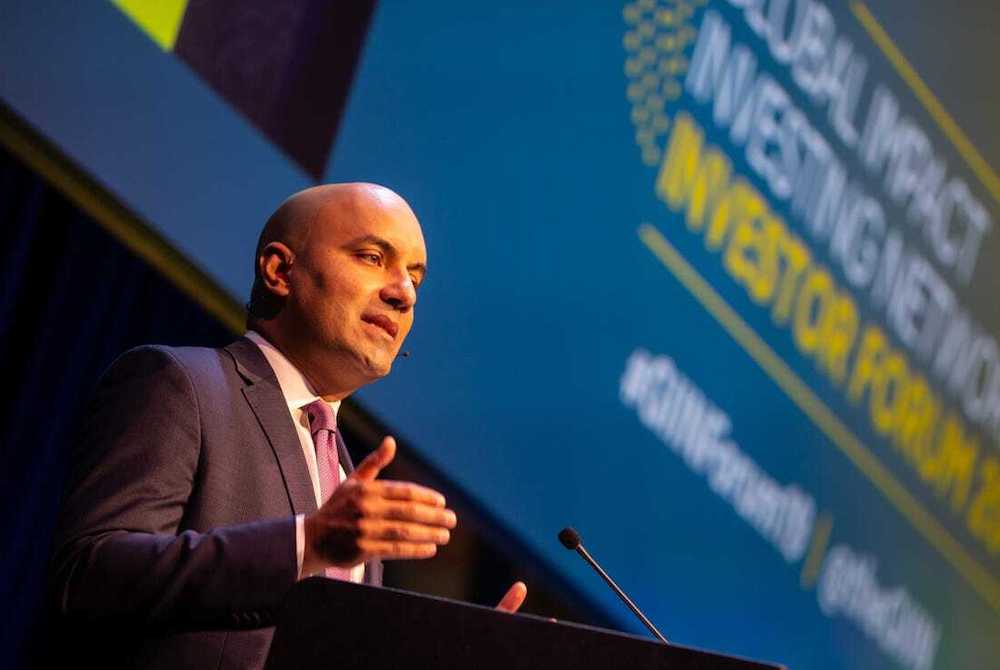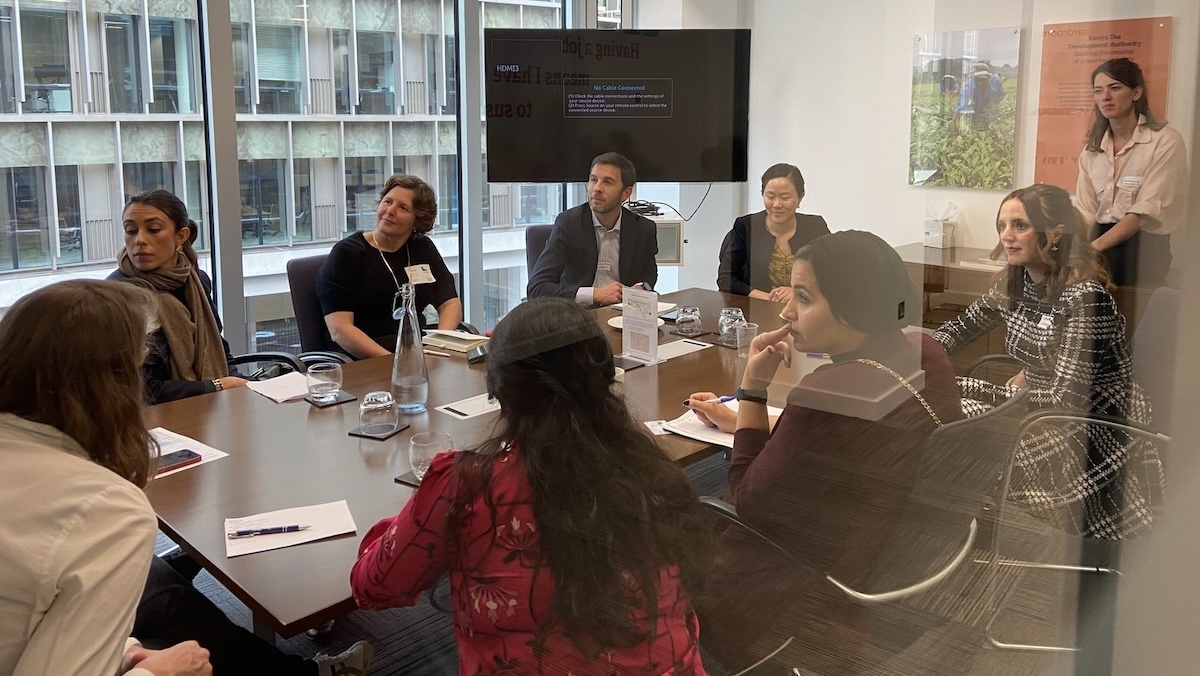ImpactAlpha, October 13 – Impact investing assets under management surpassed $1 trillion as funds, foundations, development finance agencies and other investors have sought impact in private-market opportunities.
Still, the milestone, reported by the Global Impact Investing Network, is a drop in the bucket of global finance. The real action: the $100+ trillion in publicly listed equities of the corporations that drive the global economy.
The GIIN, long focused on the impact of private investments, is looking to stake out some impact turf in public-equity and fixed-income investing.
“So much capital is in listed equities,” The GIIN’s Amit Bouri told ImpactAlpha on the sidelines of the GIIN Investor Forum, which convened in The Hague this week after a three-year hiatus. “We would also like that capital activated around driving positive impact in the world.”
Conventional wisdom among impact investors has long held that investments in publicly traded corporations produce little impact. Shares are generally purchased from existing shareholders rather than the companies themselves. And, at least in the case of large-cap companies, other buyers are plentiful, limiting the additionality of impact capital. In the GIIN’s market sizing survey in 2018, investments seeking to achieve impact through listed equities accounted for only 17% of the global impact investing assets under management.
“As impact fund managers like us continue to succeed, we’ll help create more opportunities for high-impact companies to become part of public-equity portfolios,” said Amie Patel at Elevar Equity, an impact investment firm focused on emerging markets. “But we’re at least three to five years from that, so the question is about what we can do in the public markets now.”
A GIIN working group assembled two years ago to apply impact investing best practices to public equities has produced draft guidelines. Another report, looking at corporate venture funds, Treasury assets and other ways that corporations can have impact, is expected next month.
The rising interest in public-equities impact was prompted by corporate interest in opportunities to drive revenues with social and environmental solutions. New public market funds are claiming to deliver “impact,” adding to the confusion around terms such as sustainable investing and ESG, for consideration of environmental, social and governance factors.
“Impact labels are starting to show up in equity strategies, and there wasn’t any clarity around what should count as impact,” explained Bouri. “We want to make sure that listed equity strategies that focus on impact are reinforcing the broader definition of impact investing, as opposed to diverging from it.”
Total impact
Critics on the right and left have stepped up attacks on ESG. Some investors are moving beyond the controversies to look at companies’ “externalities,” both positive and negative. “We have to move to total impact investing,” said Steve Howard of Temasek, a global investment firm owned by the government of Singapore.
“This is not about discretionary parts of our portfolios. I don’t think in five or 10 years time we’re going to be in a position to say we can take a small amount of cash and have that in service of doing good,” Howard said. “We have to put everything in service of doing good, because in the crowded world where we’re pressed for time on climate change, then really, we have no choice.”
Proof points
The perception that “exits” are few and far between has long stifled investor interest in impact funds. Emerging market fund managers are proving they’re possible in markets many mainstream investors deem too risky. Lagos-based agribusiness investment firm Sahel Capital notched its first exit, a dairy company in northern Nigeria that it backed in 2015. Ascent Capital, an East African private equity fund that has raised $200 million through two funds, inked an exit of a healthcare diagnostics company in Ethiopia from its first fund.
Key to success: local market knowledge, said one Africa-focused fund manager at the International Finance Corp.’s SME Venture Forum alongside the GIIN gathering. “Investing in Africa is not about how clever you are, it’s about the kinds of relationships you have and maintain with entrepreneurs,” he said. That applies to acquirers as well, he added. “We focus on people who understand how these markets work.”
Embracing risk
Critical gaps in the impact ecosystem remain, including small business financing in emerging markets, climate adaptation, and women-led funds – as made evident at the IFC forum, where a session featuring managers raising second, third or fourth funds included no women. Development finance institutions, despite their mandates, have been stubbornly risk-averse.
To bridge such gaps, British International Investment, formerly CDC Group, launched a new funding vehicle that can take on more risk than even its existing $1 billion “catalytic strategies” portfolio (see, “How CDC Group is innovating with catalytic capital”). The new investment facility, called Kinetic, is being piloted with £40 million in grant capital from the U.K. Foreign and Commonwealth Development Office, to use “highly flexible investment instruments” to invest in climate innovation in Africa and Asia, BII’s Yasemin Saltuk Lamy told ImpactAlpha. “We believe this partnership will foster a pioneering portfolio to help communities adapt and achieve climate resilience.”












